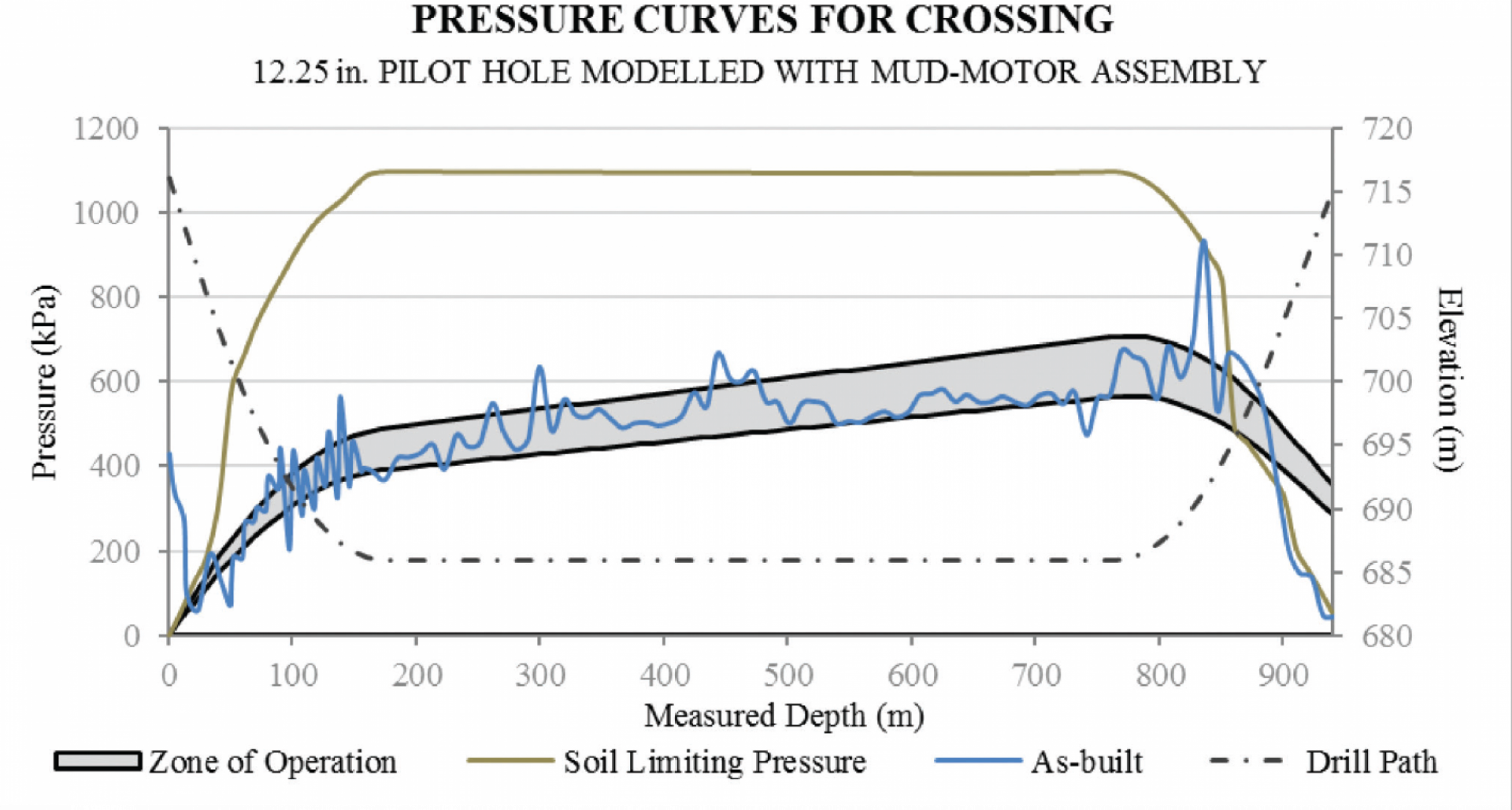CCI was a groundbreaker in the implementation of Annular Pressure design and monitoring in the HDD industry, a process that has revolutionized the industry and is now integral in HDD construction throughout the world.
Horizontal Directional Drilling (HDD) construction methods have become one of the most widely accepted techniques for installation of pipeline crossings. Design of HDD installations, among other design techniques, includes modelling of pressures down hole and of the overburden geological materials. The down-hole pressure in an HDD installation is commonly known as annular pressure.
Drilling fluid mechanics in the annulus are very complex and difficult to quantify.
However, methods from vertical oil well installations can be applicable to HDD. Although these methods can be applicable, full understanding of the fluid models and parameters used is imperative to design a safe installation.
The fluid pressure calculations include two components; a hydrostatic component and a dynamic (fluid friction) component. The hydrostatic component is usually the greater and dominates when there is a large difference in elevation between the entry point and the position along the drill path. The dynamic pressure is calculated as an incremental pressure drop that depends on, among others, the size of the annulus, the flow rate, and the fluid rheological properties. Various calculation methods exist to quantify the dynamic pressures in the borehole and experience is important in choosing the appropriate method.
The second portion of the annular pressure analysis is to determine the capacity of the surrounding geology to contain the pressure created down hole from the act of drilling and prevent hydraulic fracture to surface.
Different soil and bedrock types exhibit different properties in various situations. Development of a proper overburden pressure model requires both extensive experience in horizontal directional drilling practice and knowledge in the field geotechnical engineering. It should also be noted that the geotechnical properties for the overburden analysis could vary along the length of the drill path, and should be considered during the analysis.
Generally, as a drill path gets deeper the effective strength within the overburdened soil increases; this also increases the capacity of the soil to contain the fluid pressure inside a borehole.
As the pressure along the borehole wall increases, the borehole expands radially. At some stress state defined by the Mohr-Coulomb failure envelope, this radial expansion initiates a shear failure of the soil and a hydraulic fracture occurs (which may lead to “Frac-Out”).
To predict this failure, knowledge of the soil type and parameters are needed to form the Mohr-Coulomb failure envelope. The envelope describes the stress state of the soil adjacent to the borehole wall at various stresses. Once the stresses experienced by the soil fall outside of the Mohr-Coulomb failure envelope, the soil would be expected to fail.
Prediction of hydraulic fracture in soil can be done by use of a cavity expansion model or other analytical methods.
The cavity expansion theory quantifies how the borehole geometry changes due to an applied pressure inside the borehole, inducing stress on the borehole wall. This method has been useful in predicting maximum allowable pressures for many horizontal directional drills.
In many cases, there is an ability to monitor pressures during construction and it can be used to predict fractures downhole before they are seen at surface. CCI utilizes this data to continually improve the modelling process during design by determining when and at what pressure the previous hydraulic fractures had occurred. CCI has revolutionized the analytical modelling process by refining the design calculations to correlate to the as-built or realized pressure data which is just another innovation that makes CCI the industry leader in crossing design.


